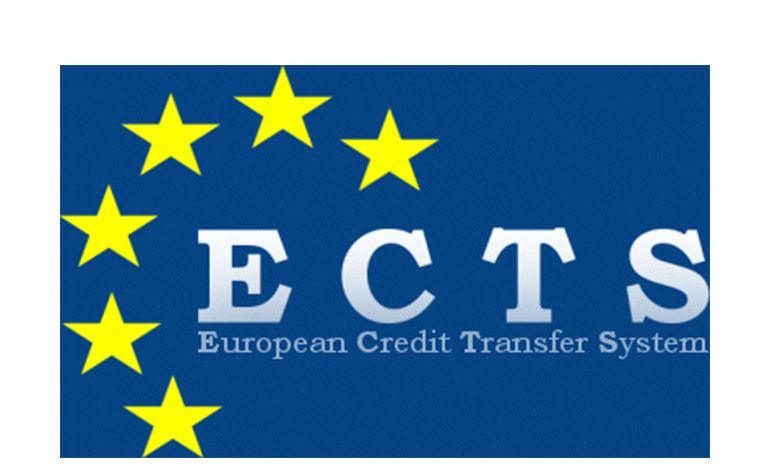
The European Credit Transfer and Accumulation System (ECTS) is a tool of the European Higher Education Area (EHEA) for making studies and courses more transparent and thus helping to enhance the quality of higher education.
ECTS was instituted in 1989, within the Erasmus programme, as a way of transferring credits that students earned during their studies abroad into credits that counted towards their degree, on their return to studying in their home institution. In the following years, it came to be used not only for transferring credits, on the basis of workload and achieved learning outcomes, but also for accumulating them in institutions’ degree programmes. ECTS helps in the design, description and delivery of programmes, makes it possible to integrate different types of learning in a lifelong learning perspective, and facilitates the mobility of students by easing the process of recognising qualifications and periods of study. ECTS can be applied to all programmes, whatever the mode of delivery (classroom-based, work-based, distance learning) or the status of students (full-time, part-time), and to all kinds of learning contexts (formal, non-formal and informal).
The ECTS Users’ Guide offers guidelines for implementing ECTS and links to useful supporting documents. Following the request from Bologna Ministers in Bucharest (Bucharest Communiqué, 2012), the ECTS Users’ Guide of 2009 has been revised, in order to strengthen the ‘meaningful implementation of learning outcomes’ in the EHEA. The Guide takes forward the objective of Ministers to ‘call on institutions to further link study credits with both learning outcomes and student workload and to include the attainment of learning outcomes in assessment procedures’. This revised version is based on a solid foundation of work done in recent years, both within the Bologna Process and in individual countries, to help the academic community and other stakeholders in higher education to move in the direction of the changes advocated by the Bologna Process.
The revised Guide takes into account recent developments in the Bologna Process such as the establishment of the EHEA, the consolidation of lifelong learning, the paradigm shift from teacher-centred to student-centred higher education, the increasing use of learning outcomes, and the development of new modes of learning and teaching. It includes a specific focus on programme design and delivery, and builds on the experience of higher education institutions in using qualifications frameworks and in applying ECTS principles in academic practice.
The Guide is offered to students and other learners, academic and administrative staff in higher education institutions as well as to employers, education providers and all other interested stakeholders. For ease of reading, the term ‘student’ is used to refer to all learners in higher education institutions (whether full-time or part-time, engaged in distance, on-campus or work-based learning, pursuing a qualification or following stand-alone educational units or courses).
The revised Guide has been written by a working group of practitioners appointed by Bologna countries and stakeholders’ associations. It has been submitted for consultation to stakeholders’ associations, experts from countries in the EHEA, and the Bologna Follow-up Group. The European Commission has coordinated the drafting and consultation process. Finally, the Guide has been adopted by Ministers for Higher Education of the European Higher Education Area in 2015 at the Yerevan ministerial conference. It is therefore the official Guide for the use of ECTS.
ecTS users-guide_en Download